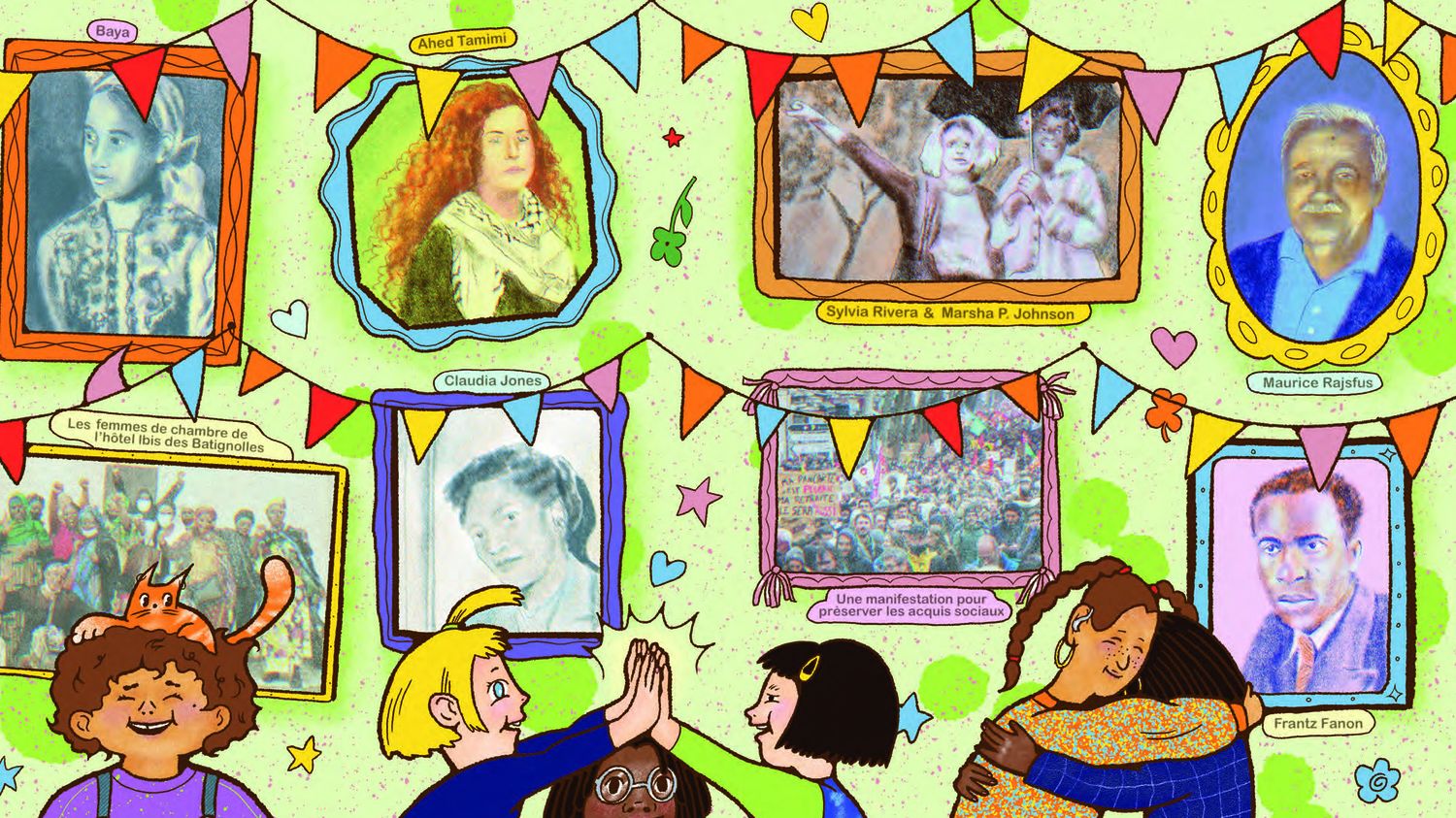On the occasion of the release of the children’s book “Le Musée mal rangé” (Shed Publishing), Houyem Rebai, school teacher in Saint-Denis, describes why she thought of this book as an educational tool.
Published
Reading time: 4 min

In bookstores since Friday October 11, The untidy Museum tells the story of a teacher visiting the “Grandiose Museum of Brilliant Personalities” with her class. At the museum, a student in the class realizes that the portraits of the historical figures in the museum are all men and that they are not like his classmates, “of all colors and sizes”. He then asks his mistress for explanations. Through this story, Houyem Rebai, school teacher in Saint-Denis, talks about the invisibility of women and racialized historical figures in collective stories.
franceinfo: Did you draw inspiration from your job as a school teacher to write the history of Untidy museum ?
Houyem Rebai. It was the children who inspired me. On Monday and Thursday in my class, I organize “Morning talk” which is a time when we get together. Four children register freely to discuss a subject that interests them or present an object for five minutes. Then, I summarize our discussion and the children leave with a summary.
A little girl who was no longer in my class, but still in the same primary school, walked in front of the class and wanted to show a game of the 7 families which represented historical figures. When laying out all the cards, only one showed a black personality. What’s interesting is that when I asked students if they had an explanation for the absence of non-white people, they looked for reasons like “the manufacturers forgot” or “they don’t know of any black personalities. But no one said: “It’s normal, it’s because it doesn’t exist.” A student then asked to count to find out how many men and women there were. According to their interventions, they quickly put words into words when talking about injustice, racism and sexism.
Why did you choose the location of the museum specifically?
There is the anecdote of the game of 7 families which inspired me, but it is also because when we want to talk about racism for example, we will often focus on the insults. We therefore think of racism more as an individual problem, but not as the product of a social organization or a colonial heritage. And I think that institutional spaces like museums are very little questioned on the subject of the invisibility of certain communities. Museums are also imposing places that establish authority through their architecture and shape the experience of children and adults. And as a person belonging to minoritized groups, I realize that we are not represented enough or often through colonial or exoticized representations.
In your opinion, is there a minimum age for talking to children about racism and discrimination?
No, not at all, but I figured it out later! At the beginning of my career, I thought that we should protect children from the rest of the world and not talk to them about injustices. Today, I come back to this because for me, it is a mistake.
“Children do not live outside the world. They also experience discrimination and even more so because of their age, because they cannot defend themselves. We tend not to consider them as subjects capable of thinking and building their world.”
Houyem Rebai, school teacherat franceinfo
On the contrary, I think that if a child experiences things, but he doesn’t have the words to talk about it, it can be even more violent for him. If we don’t allow a discussion about violence, I believe that children can tell themselves that it is their fault. And I see that when I remember the child I was! What I am trying to do with this book is to put meaning and words on the invisibility of certain communities in the historical narrative.
So the book is intended for children as well as adults?
It is a youth album intended for children, but also for adults and teachers. I think it’s important to talk about the position of the adult in the story: the teacher does not present herself as a knowledgeable person. When Adnan asks her why there is no diversity in the “Grandiose museum”, the teacher declares that she does not know, that she must think about it and begins a discussion the next day in class. The message I would like to convey to teachers and educators is that you need to know if “I don’t know” and take the time to think.

In science for example, we easily have this posture but often, on the subjects of discrimination, as it is taboo, we dodge the question. On the contrary, it is the opportunity for a moment of learning, even if it actually requires questioning one’s own practices too. I believe that we really need to answer children’s questions about racism or any other discrimination because by making discrimination invisible, we run the risk of perpetuating it.
The untidy Museumed. Shed Publishing, released October 11 in bookstores.
Wednesday October 16 – from 2 p.m. to 4:30 p.m.: workshop and reading of the Untidy museum with Shed Publishing, at the Maison des Arts de Malakoff.
Exhibition from October 15 to 29 at the La Regular bookstore, Paris 18th.
